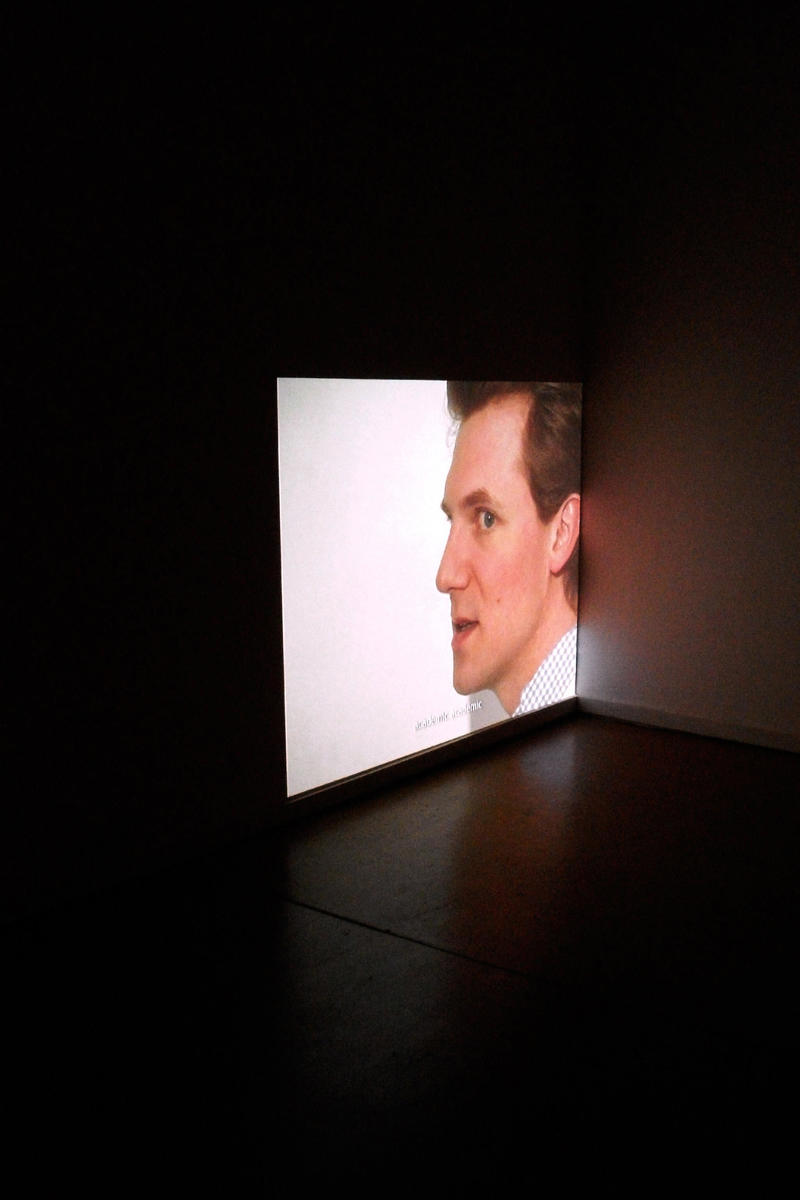
courtesy the artist and Rodeo, Istanbul
Istanbul
A Principle of Assumptions
Rodeo Gallery
April 17–May 31, 2008
Curated by Krist Gruijthuijsen and Sylvia Kouvali, ‘A Principle of Assumptions’ explored how we build, store, and consume knowledge. The works on display revealed the ambiguity inherent in using narrative tools to make meaning of the past and the difficulty of relying on shared assumptions that shape social knowledge and history. Loaded in content yet still playful, the exhibition reflected on knowledge — how it is stored, worshipped, and disseminated. The exhibition, which hosted four international artists, marked Rodeo’s deft debut on the Istanbulite art scene.
In proposal for an infinite library (2008), artists Haris Epaminonda and Daniel Gustav Cramer dissected two books and then rebound them in a manner that mixed the pages into new and unique volumes. Among the thirteen volumes realized so far (the series is ongoing), proposal included three adjoining pages from Jukes Roger Sauter’s book on mineral photography (Brasilien–Paradies der Edelsteine, 1982) with pages from Rudolf Pfister’s book on residential architecture (150 Eigenheime, 1932). With these hybrids, the artists suggested an alternative purpose for books and at the same time defied thematic categorizations and the notion that knowledge is authored. As the combined content ultimately turned out to be coincidental, viewers encountered objects with open-ended potential.
Installed next to their work, Adam Leech’s video Lots of Money (2008) also concerned the coincidental aspect of communication and knowledge sharing. The work featured a bizarre dialogue conducted in an interview format, in which the interviewee gave nonsensical responses to the interviewer’s queries, using random words and a mechanical tone. The fixed camera captured a closeup of the interviewee, whose posture and gaze were also fixed or frozen. Scripted by Leech, the broken dialogue and awkward body language not only triggered an eerie feeling but catered to the viewer’s voyeurism. The video diverted the focus away from the interaction between interviewer and interviewee, underlining the performative aspect of the work. Lots of Money challenged assumptions about how knowledge is conventionally transmitted, with an absurd articulation of communication breakdown.
Tamar Guimarães’s Listed Entries (2006) consisted of archival research on Jan Leton — a black slave put in the charge of the bailiff of Skagen in Denmark in the early nineteenth centur — presented on a black and white poster, along with a sound piece and a projector that merely reflected its own light. The historical “facts” on Leton and Guimarães’s research process were arranged into an index with missing letters and no clear chronological order. The entries — such as “Ship which brings Jan to the shore,” “Stowaway,” and “While in Skagen” — covered a period of 178 years, from 1827, when Leton died, to 2006, when Guimarães assembled the archive. Guimarães’s work borrowed the methodology of historiography by combining primary sources and oral accounts, including death registers, newspaper clippings, and personal conversations. It also challenged the alleged truths of the historical material as it suggested a flowing and dynamic definition of the archive as incomplete and non-chronological. Viewers were immediately drawn into the work, presented under a strong spotlight in a relatively dark gallery space, and compelled to categorize the entries.
In addition to works focused on archival research, Christodoulos Panayiotou’s installation Act 1: The Departure (2008) explored the infinite possibilities of narrative by using a folded theater backdrop, along with an old image of it unfolded to show the head of a ship at twilight. The image was hung high on the wall, while the folded backdrop sat on the floor. Resisting the temptation to unfold the backdrop, viewers were invited to assume that the crumpled backdrop portrayed the same scene and draw associations between the two. Depicting the first act of a colonial story, the installation proposed various readings for its following acts. Although it excluded the stage and the actor, Act 1: The Departure suggested the theatricality of storytelling and historiography and, as a result, piqued curiosity and stimulated the imagination.
While ‘A Principle of Assumptions’ successfully raised interesting issues about knowledge, archive, and history, viewers were sometimes left to contextualize individual works and the exhibition as a whole entirely for themselves, as if they had stumbled upon a story that remained incomplete. Still, while the exhibition delicately challenged viewers’ shared desire for orderly narratives, it also allowed them the pleasure of exploring works on their own and making their own connections between them.